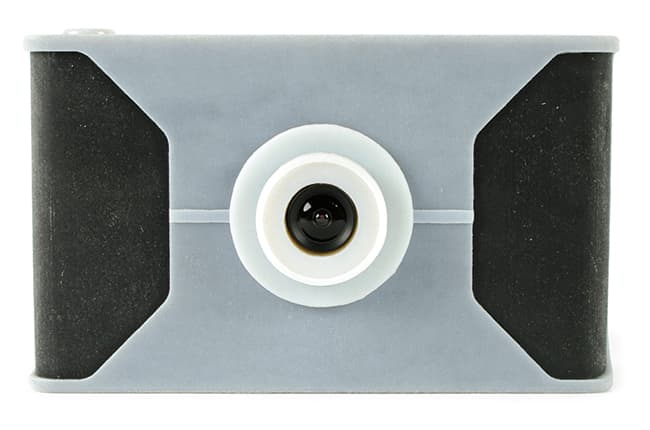Create a 3D-printed camera
A look at 3D printing community websites such as Instructables or Thingiverse reveals a number of camera projects that entirely or partially use 3D-printed parts.
For those who would like to explore 3D printing and know their way around a soldering iron, a simple 3D-printed camera on Instructables is a perfect first project.
The camera doesn’t have a screen and therefore doesn’t allow for image preview, giving it a bit of a film-camera feel. It uses a 3D-printed body, but most of the internal components, including the main camera module, an SD-card slot and an Arduino processing board, can be purchased at any well-stocked DIY electronics retailer. The total cost of the project should be no more than £65.
If you’d like to try your hand at 3D printing without getting involved with advanced electronics, a pinhole camera is a great starting point. And if you don’t quite feel ready to make your own design there are plenty available to download using a variety of film formats. Some of the printable pinhole cameras are also available for purchase ready-made for those who like the look and feel of the 3D printed cameras, but don’t have access to a printer.
If you want to try your hand at something more complex, take a look at the FrankenCamera project to convert a film camera to digital using 3D printed parts, or the OpenReflex project to 3D print an SLR camera.
Create 3D-printed camera accessories
Designing and building your own camera, even a pinhole model, is of course a highly complex task and not for everyone. However, 3D printing can be an extremely useful tool for photographers in simpler ways. Most of us have lost a lens cap or small accessories while out shooting. These items can often be difficult to replace. Imagine if you could simply print a new one when you get back to the office. Yet 3D printing can not only help replace lost or misplaced items, but it is also great for making accessories that require a degree of customisation and are therefore unsuitable for mass production using conventional manufacturing methods.
A web search reveals a plethora of building instructions for 3D-printed accessories, including tripod plates, film holders, camera supports of various shapes and sizes, lens-cap holders to attach to your camera strap, focus rings that are custom made for a specific lens, protective cases and tilt-and-shift lens adapters. There is also a choice of helmet and bike mounts for action cams, and we’ve even seen a 3D printed gimbal-style camera stabiliser that helps to shoot smooth and stable video footage from www.luuv-stabilizer.com.
Fortunately, there is no need to invest in a 3D printer straightaway, as 3D printing services are available in many locations and online.
We bet you can’t wait to work on your first 3D printed camera or accessory, and we look forward to seeing what great projects AP readers come up with. Please do share your results with us.










